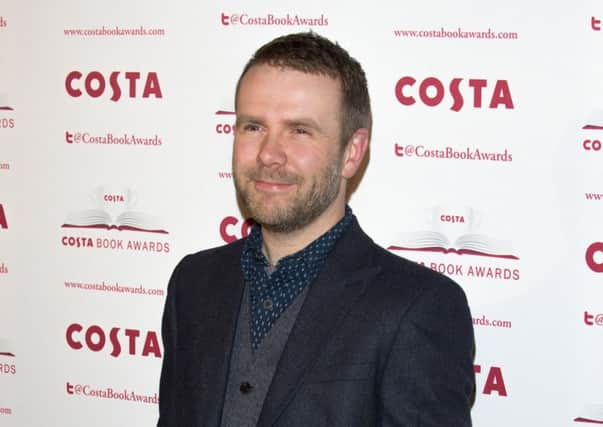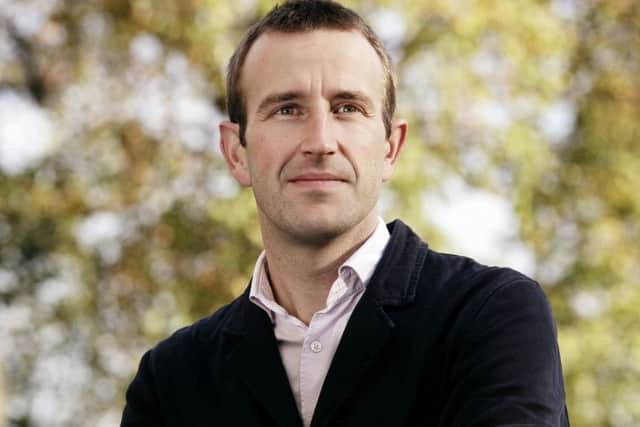Book reviews: Starve Acre, by Andrew Michael Hurley and Ness, by Robert Macfarlane


The novel is lensed on Richard Willoughby, an academic who, in the aftermath of the death of his infant son, has become obsessed with rumours of the remains of an oak that once was used for hanging. His wife is, understandably, depressed and is seeking comfort from a mysterious group of spiritualists that call themselves the Beacons. As the novel progresses, hints are dropped that something may not have been quite right with late, little Ewan, especially his fascination with “Jack Grey”, a whispering entity from the woods, who encourages horrors and who may be connected to the Beacons and the oak.
As I have said, a lot of this is gloomy fun for a November evening, but it seems too close to what has come beforehand. It is also somewhat ladled. In addition to all the rest, we have a plotline involving a hare coming back to life. The reason I give this spoiler is that Richard is depicted mostly as an arch-sceptic about all things supernatural and yet he seems moderately unconcerned by a resurrected hare. The inconsistency of character may be the point, but it might have been done more elegantly. If you know you are going to be spooked, you will not be spooked. But I have every confidence that Hurley is a sufficiently skilled writer to move away from his – and the reader’s – safety zone.
Advertisement
Hide AdIt was a strange elision to move from Hurley’s novel to Robert Macfarlane’s Ness. Well, what is it? Prose poem? Artwork (it is beautifully illustrated by Stanley Donwood)? Multi-media meditation? Having read all of his work, what was most surprising about this is how surprising it was. It bears little relationship to Mountains Of The Mind, The Wild Places,The Old Ways or Underland, although it does have a connection with Untrue Island, his musical collaboration with double-bassist Arnie Somogyi, which is also about the setting of this work: Orford Ness. Orford Ness is a genuine paradox. On one hand it is now a Site of Special Scientific Interest and on the other it contains the ruins of the Atomic Weapons Research Establishment. But in Macfarlane’s book it becomes something else as well. It is the Green Chapel, which carries associations with the poem Gawain And The Green Knight. As with Hurley’s novel, the English mythology is seeping into the present.


There are five people – or are they people? – on Orford Ness, who have turned the former military site into their own chapel of dereliction. These sections are almost mythic, or even liturgical as The Armourer, The Engineer, The Ornithologist, The Botanist and The Physicist conduct their rituals. But at the same time another quintet of things are approaching, identified only as It, He, She, They and As. The book ricochets between the service in the Ness and the encroaching ideas, all of which exemplify some aspect of the world. It is not the “natural” world – “It” is made of “pallet-slat & bottle-top” and “breathes out rust”. Gradually, the -ists succumb to something more powerful and dangerous than the weapons they are praying to test.
As one would expect, Macfarlane creates his fecund entities with serious intent: birds, fungi, shingle, flotsam and our relationship with both the built and given environment in the form of “as”. “As” is “hopelessness and forgiveness”; but “As” is – not explicitly, but subtly – a kind of ambiguity and benediction at the end.
Both of these books deal seriously with hopelessness and forgiveness. Starve Acre again looks at grief and the longing for redemption; Ness takes a place that could well have helped destroy the world and chants it back into a place where the wild world returns. Neither book romanticises nature. Hurley’s novel makes it a kind of menace, and Macfarlane’s figures it as a vengeful spirit against the technocratic. Neither gives easy answers. There are no easy answers, and that is the point of literature. Stuart Kelly
Starve Acre, by Andrew Michael Hurley, John Murray, £12.99
Ness, by Robert Macfarlane, Hamish Hamilton, £14.99